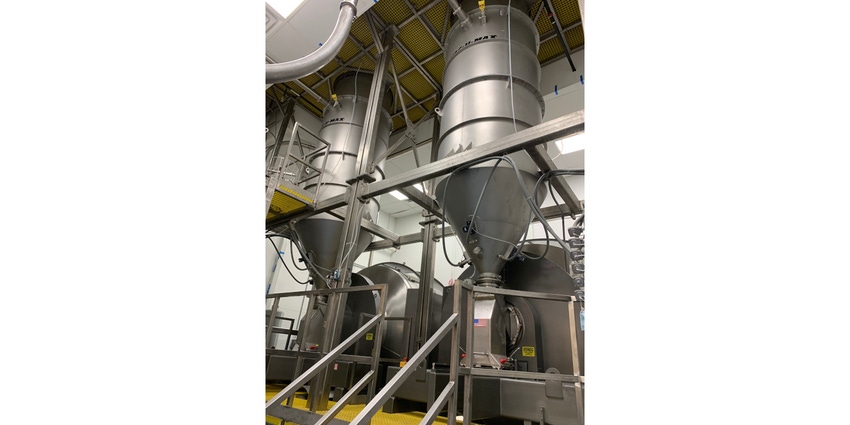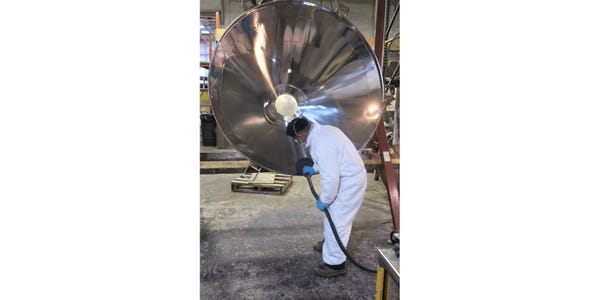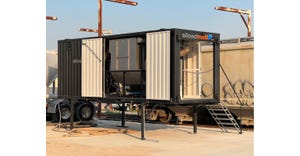Efficient cleaning with leading edge vacuum technologies decrease cleaning downtime and eliminate hazards in the process.
November 23, 2020

Doan Pendleton, president, Vac-U-Max
In industries where stringent FDA and USDA sanitary regulations lead to extended downtime for cleaning, time-saving details incorporated into vacuum conveyor design become critical factors in increasing throughput by minimizing downtime and, therefore, reduced costs.
Vacuum conveying is an economical and efficient method of transferring powders and bulk solids materials, eliminating ergonomic hazards, reducing cleaning times, increasing process speeds, maximizing food safety, and preserving formula accuracy.
When a company is looking for a sanitary method to move bulk materials there are several different technologies with sanitary design to choose from, but vacuum conveying is usually the right one for sanitary transfer of powders.
Enclosed vacuum conveyors prevent loose powder from becoming airborne. If a leak occurs in a vacuum conveying system, the leak will be inward preventing fugitive dust from escaping into the environment, making them the preferred method of transfer for sanitary environments where prevention of combustible dust conditions and cross contamination is essential.
There are different thresholds of hygienic design based on specific industry guidelines required of food, pharmaceuticals, nutraceuticals, or cosmetics manufacturers. Although the FDA does not specifically address Hemp processing, the CBD extracted from it classifies as a drug and should follow pharmaceutical guidelines.
Sanitary and hygienic vacuum conveying systems have the same five basic components as standard conveying systems that come together to work as one – a pick up point, convey tubing, a vacuum receiver, a vacuum producer, and a control module.
From the pick-up point, material flows through stainless steel convey tubes to the vacuum receiver which discharges powders through valves on the bottom of the receiver. The vacuum producer is the heart of pneumatic conveying systems and works with the control panel to manage the flow of material through the convey tubes to the vacuum filter receivers.
What makes sanitary vacuum conveyors unique is that all parts and components must be sanitary, meaning easy to clean and constructed with materials and fabrication techniques that meet Current Good Manufacturing Practices (cGMP). cGMPs for food and drug manufacturing specify general regulations for design, construction, and fabrication of sanitary equipment.
In the realm of vacuum conveying there are certain baseline standards that set the trajectory of building out a sanitary design system and every component must comply with the standards.
Filters, gaskets, vacuum hoses, and valves, constructed of FDA-approved materials, should include certificates of conformance with project documentation.
While all components included in systems comply with FDA regulations, more sophisticated valves, such as rotary valves and butterfly valves, are specialty designs unique to sanitation. For instance, rotary valves incorporate slide-out rotors and wafer or butterfly valves feature split-valve construction for easy sanitizing.
Stainless steel convey tubing is the standard in sanitary design. In order to facilitate quick take-apart design and support ergonomic standards, manufacturers design systems that limit convey tubing to 10-ft lengths that weigh approximately 50 lb. The easy to take apart ferrules that connect the 10-ft sections comply with cGMP standards and require no tools and no loose parts for disassembly and re-assembly.
Surface finishes are important in sanitary design to limit places where materials or bacteria can cling to miniscule pockets. The surface finish of product contact surfaces in a sanitary design will involve some level of interior and exterior polishing and mandatory grinding down of welds. Most customers call for maximum roughness measurements of RA25-34, but the best sanitary design practices bring the roughness down to an RA between 10-15 as measured by a profilometer.
Continuous welds and sleeved holes in hollow members should be standard.
Well-designed sanitary conveying components include passivation after fabrication. Passivation with nitric or citric acid removes free iron from the surface of components providing a protective oxide layer that is less likely to allow moisture to stick to surfaces.

If there are any control elements located in a washdown environment, stainless steel electrical enclosures are standard and have a water-shedding type of design with a sloped top, sloped door edges, and rated for NEMA 4X.
While most processers establish engineering standards for sanitary design unique to their facility, product, and sanitation process, they may lack the knowledge on how to most efficiently clean the equipment. Working with a seasoned conveyor manufacturer with decades of experience designing sanitary equipment with efficient design can significantly reduce cleaning downtime.
One of the most important factors in sanitary design is the ability to clean equipment thoroughly and quickly. Processors looking at purchasing sanitary equipment should know how easy it is to take apart and wash.
Vacuum conveyors are often permanently installed above other process machinery and, therefore, more time consuming to clean to the extent required for sanitary applications.
Mobile and column lift conveyors are complete conveying systems that raise and lower the receiver in order to load mixers, reactors, and other processing equipment and then bring the vacuum receivers back down to ground level for easy cleaning or sanitizing eliminating slip and fall hazards while cleaning. Mobile conveyors allow processors to move the equipment to another area for cleaning when necessary.
Clean-in-Place
Cleaning downtime can be devastating to a company, sometimes taking one to two days to tear everything down and clean it. When production throughput demands a high level of cleanliness with minimal labor and time, clean-in-place (CIP) equipment can eliminate hours of downtime.
CIP is a procedure designed to clean all or parts of a process system without needing to completely disassemble or move equipment. CIP is the strategic placement of spray balls, or nozzles, within vessels that circulate water and cleaning solutions. It is automatic and has consistent performance.
Although CIP has been around for a while, it is still a leading-edge technology and is gaining traction in the food, pharma, nutraceutical, and cosmetics industries-—so much so that the acronym is being using like a verb these days with customers saying they need “CIPable equipment.”
In CIP vacuum conveying systems, filter elements can be removed and replaced with insertable spray ball assemblies during cleaning. During the cleaning cycle, the pressure from the water or cleaning solutions extends the retractable balls outward for cleaning and then self-retract after the cleaning cycle, so they don’t interfere with the conveying process.
When a nutraceutical beverage producer landed a large contract, it needed to increase throughput and reduce the eight-hour cleaning cycle that occurred between batches in order to meet demand.
To achieve this, the beverage producer replaced its 90-cu-ft mixer with a 160-cu-ft CIP mixer, a CIP vacuum receiver, and CIP bag dump station. These changes reduced sanitation from 8 hours to 1.75 hours, gaining 6.25 hours of production and reduced labor costs every day.
The CIP system also averted the need to develop a confined space plan with the new larger equipment since the sanitation team didn’t need to enter the process vessel for cleaning.
Good sanitary vacuum conveyor design includes a package of simulated spray ball positioning and surface coverage documentation.
Time-Saving Strategies
To save time some processors have two sets of convey lines and/or two sets of filters so they can quickly switch out dirty components with clean components, cleaning the other while the next process runs.
Other processors--particularly those that run different flavors or colors--might have filters dedicated to certain ingredients (like cherry or licorice, for instance).
The practice of extra filters and tubing can be employed with CIP or traditional sanitary systems, increasing the speed at which processors get systems up and running again.
Sanitary design is a specialized field and expert conveyor manufactures that have worked with more than 10,000 materials and have decades of experience building hygienic vacuum conveyor systems understand the different requirements for food, beverage, pharmaceuticals, nutraceuticals, and cosmetic applications, and know what has to be done to provide processors with the most efficient sanitary powder and bulk solids transfer systems.
Doan Pendleton is president, Vac-U-Max (Belleville, NJ). For more information, call 973-200-6619 or visit www.vac-u-max.com.
You May Also Like


